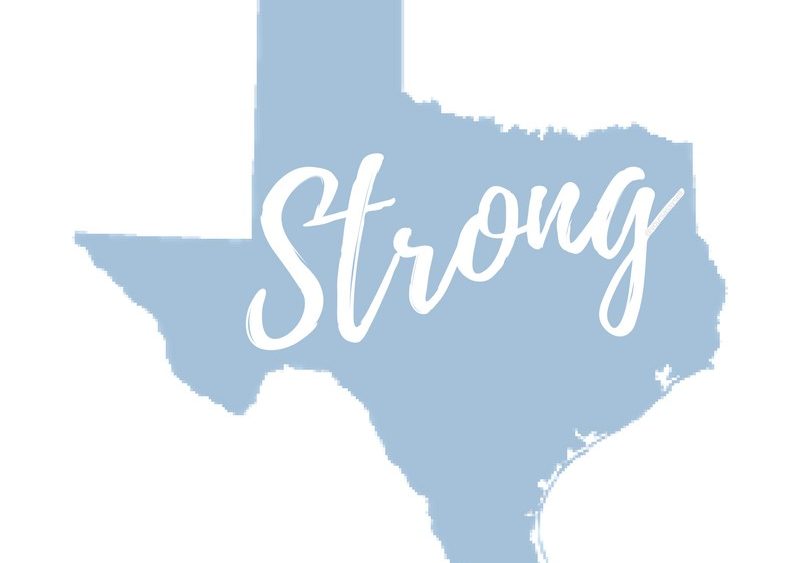As Texans begin to restore and rebuild following one of the most devastating storms in US history, we thought it would be a good time to talk about some of the health concerns that exist in this post flood environment and precautions everyone can take to stay healthy.
Harmful Elements in Flood Waters 
Flood waters contain a variety of potentially harmful elements, many of which linger even after water begins to recede. Aside from sheets of fire ants, snakes and other potential harmful critters, sharp metal bits, nails and glass shards are often prevalent and linger in debris.
In a recent interview with the Washington Post, Peter Hotez, dean of the National School of Tropical Medicine at Baylor College of Medicine, explained that sewage systems merge with flooding rain, introducing infectious human waste to streets and into flooded homes. What remains as sludge and a dirty film permeates everything it once washed over. While the waters recede, the infectious elements remain and must be treated with caution (1).
And while it is not easy to predict which microbes will cause the greatest problems, the Centers for Disease Control and Prevention (CDC) reported 30 cases of MRSA, an antibiotic-resistant staphylococcus bacterium, in a group of New Orleans evacuees following Hurricane Katrina in September 2005. “Vibrio” pathogens, also known as “flesh-eating” bacteria, sickened two dozen people and killed six – in addition to reports of heat and infection-related skin rashes and red marks associated with biting mites (2).
Other Post Storm Concerns
The harmful material contained in flood waters and the contaminated and dangerous debris left in its wake are common concerns following a flooding storm (3), but there are also other lesser known concerns and areas of caution. These include:
- Stress-related Musculoskeletal Conditions / Immunodeficiency
- Poor food hygiene
- Respiratory illness
- Poor water quality – gastrointestinal distress
- Cuts / lacerations
Scientific research is increasingly reporting the significant role that stress plays in our overall health – from a weakened immune system predisposing us to a host of illnesses, to increased risk of musculoskeletal injuries and conditions traditionally associated with physical stress only. The type of stress that can come with the anticipation of such a storm, its duration and damaging aftermath is capable of threatening the health of an individual in ways many may not realize. Referred to as “psychosocial” factors (frustration, dissatisfaction, depression and despair), the resulting stress has shown to induce physiological responses that can contribute to the development of musculoskeletal disorders (4).
Additionally, food and water quality that is compromised during power outages can challenge the healthiest among us if not approached with caution (5). Upper respiratory disorders associated with the rapidly growing mold following a Texas flood are a big concern. Exposure to mold spores can prompt a rise in asthma and other respiratory illnesses. The close proximity of individuals housed in shelters or working shoulder to shoulder in cleanup efforts can perpetuate respiratory illnesses and other communicable diseases.
Cuts and lacerations resulting from and/or exposed to flooded debris are particularly concerning to physicians. The skin is the largest organ of the human body and should be protected as such. Any opening creates vulnerability to not only the affected area but the entire body, particularly when exposed to potentially harmful microbes often found in flood water and debris as described earlier.
Reducing Risks and Staying Healthy Post Hurricane Harvey
There are several precautions that flood victims and those helping in their recovery should do to ensure everyone stays healthy post Hurricane Harvey. These include:
- Tetanus booster shots – Texas health officials urge people post Hurricane Harvey to get a tetanus booster shot to protect themselves against disease potentially entering the body through cuts/lacerations, unless one is current with their tetanus immunization (within 10 years). Even seemingly insignificant damage to a nail bed or cuticle should be treated as any other cut.
- Proper garments and supplies – Clothing protecting arms and legs from flood sludge and lingering debris is strongly encouraged, along with rugged gloves for debris removal, rubber gloves for cleaning affected areas/items and face masks to minimize inhalation of potentially harmful elements.
- Proper care of cuts/lacerations/skin rash – It is extremely important when working in flood environments to properly protect existing cuts and quickly clean and care for those occurring during cleanup. Risk of skin rashes resulting from the combination of sewage, chemicals and Houston heat can be reduced with the proper garments.
- Adequate rest, relaxation – While it is difficult for those working to rebuild their homes and quickly reclaim their lives to contemplate taking time for themselves, it is a critical part of maintaining health and well-being. The rebuilding process for many will be a lengthy one requiring strong, healthy individuals. Adequate rest, break from exposure to irritants and moments of relaxation/destressing can reduce risk of fatigue-related accidents/injuries, optimize mental outlook and maximize physical endurance.
When an injury is sustained or a respiratory or gastrointestinal irritation seems to linger, it is important to see a physician. Postponing care can in some cases complicate an otherwise simple treatment or solution – and delay all recovery efforts.
Our health is truly one of our greatest assets. Let’s protect it!
References:
- The Health Dangers from Hurricane Harvey’s Floods and Houston’s Chemical Plants. Washington Post, September 1 2017.
- Infectious Disease and Dermatologic Conditions in Evacuees and Rescue Workers after Hurricane Katrina – Multiple States. Centers for Disease Control and Prevention (CDC). August – September, 2005.
- Stay Out of Flood Water, Texas Health Officials Urge. NPR – Houston Public Media News. August 28, 2017.
- Musculoskeletal Disorders – Psychosocial Factors. Canadian Centre for Occupational Health and Safety (CCOHS). Last updated August 13, 2012.
- Food and Water Safety during Power Outages and Floods. U.S. Department of Health and Human Services. FDA U.S. Food and Drug Administration. Last updated August 25, 2017.
Other Educational Links
- Centers for Disease Control Personal Hygiene after Flood/Disaster
- FEMA – Hurricane Harvey
- American Public Health Association – Communicable Disease
- Can Flood Water Make You Sick – Time Health (August 29, 2017)



Comments are closed.